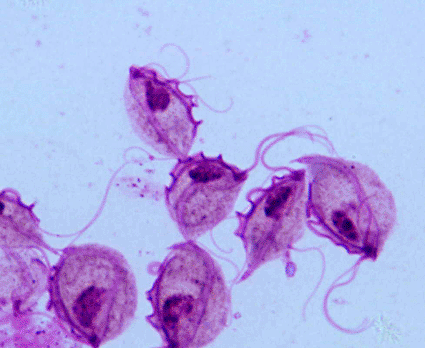Routine Screening Recommended for Sexually Transmitted Disease
By LabMedica International staff writers
Posted on 29 Mar 2011
An improved and more sensitive test should be included in the screening of vaginal swabs for women suspected of having sexually transmitted diseases (STD). Posted on 29 Mar 2011
A molecular diagnostic assay that uses transcription-mediated amplification (TMA) for the detection of Trichomonas vaginalis augments the laboratory diagnosis of venereal diseases.

Image:Trichomonas vaginalis (photo courtesy of Raymond Jacobson).
Scientists at Rhode Island Hospital (Providence, RI, USA), compared a TMA assay with a direct-specimen, ribonucleic acid (RNA) probe-based diagnostic test designed to differentiate and identify pathogens associated with bacterial vaginosis (Gardnerella vaginalis) and vaginitis (T. vaginalis and Candida species). A total of 781 consecutive specimen pairs, consisting of one vaginal specimen and one cervical or urine specimen, were collected from 766 women from July 2009 to August 2010.
The study revealed that the APTIMA assay (Gen-Probe, San Diego, CA, USA) detected 36% more women infected with T. vaginalis, yielding a sensitivity of 100% and no false positives. The authors noted a high prevalence of trichomoniasis in women in the 36 to 45 year-old age group, who are not normally included in the recommended STD screening criteria. The AFFIRM Vaginitis three pathogens (VPIII) RNA assay, (BD; Franklin Lakes, NJ, USA), which is commonly used in obstetrics and gynecological patients, produced one false positive and 15 false negative results in symptomatic patients.
Trichomoniasis can affect both men and women and the true prevalence and clinical impact is unknown because current methods of detection exhibit poor sensitivity when compared to molecular amplification methods. Kimberle Chapin, MD, lead author of the study, said, "Despite a worldwide prevalence rate likely to be double that of gonorrhea or Chlamydia infections combined, trichomoniasis is not currently a reportable disease in the United States. We also found the disease was most prevalent in women ages 36 to 45 and in women ages 51 to 60. This was definitely surprising and a new finding in these age groups." The study was published in March 2011, in the Journal of Clinical Microbiology.
Related Links:
Rhode Island Hospital
BD
Gen-Probe














